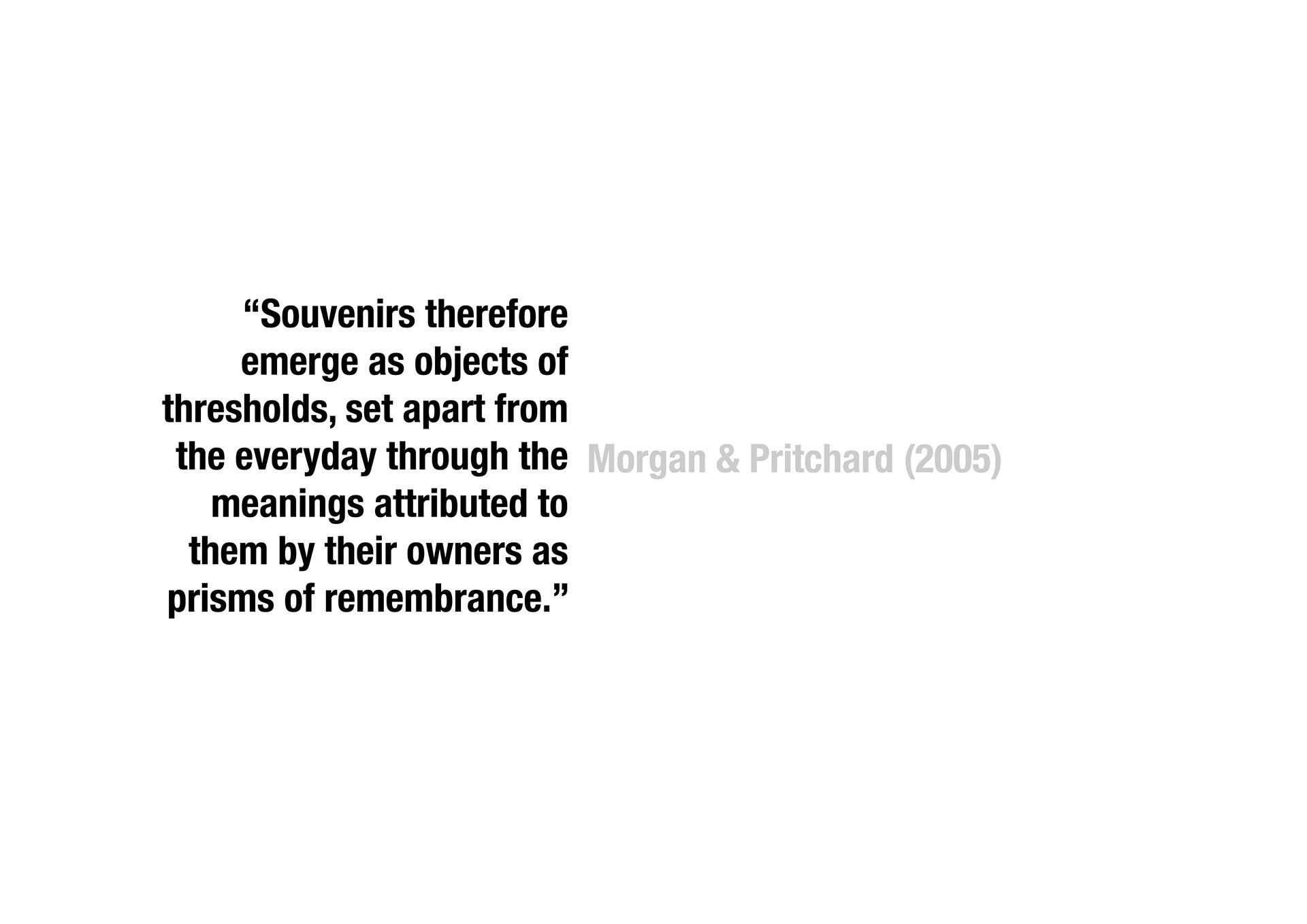
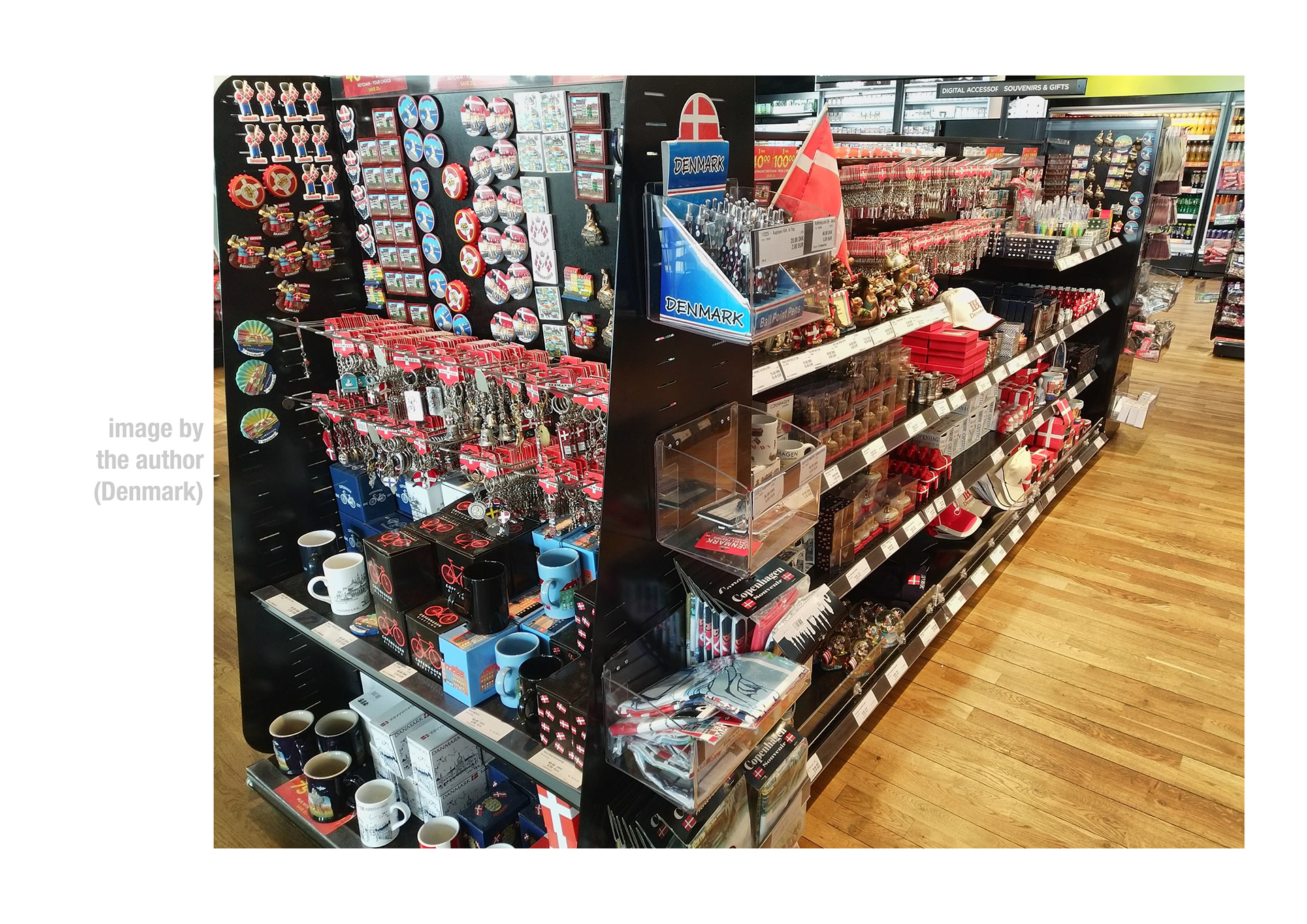

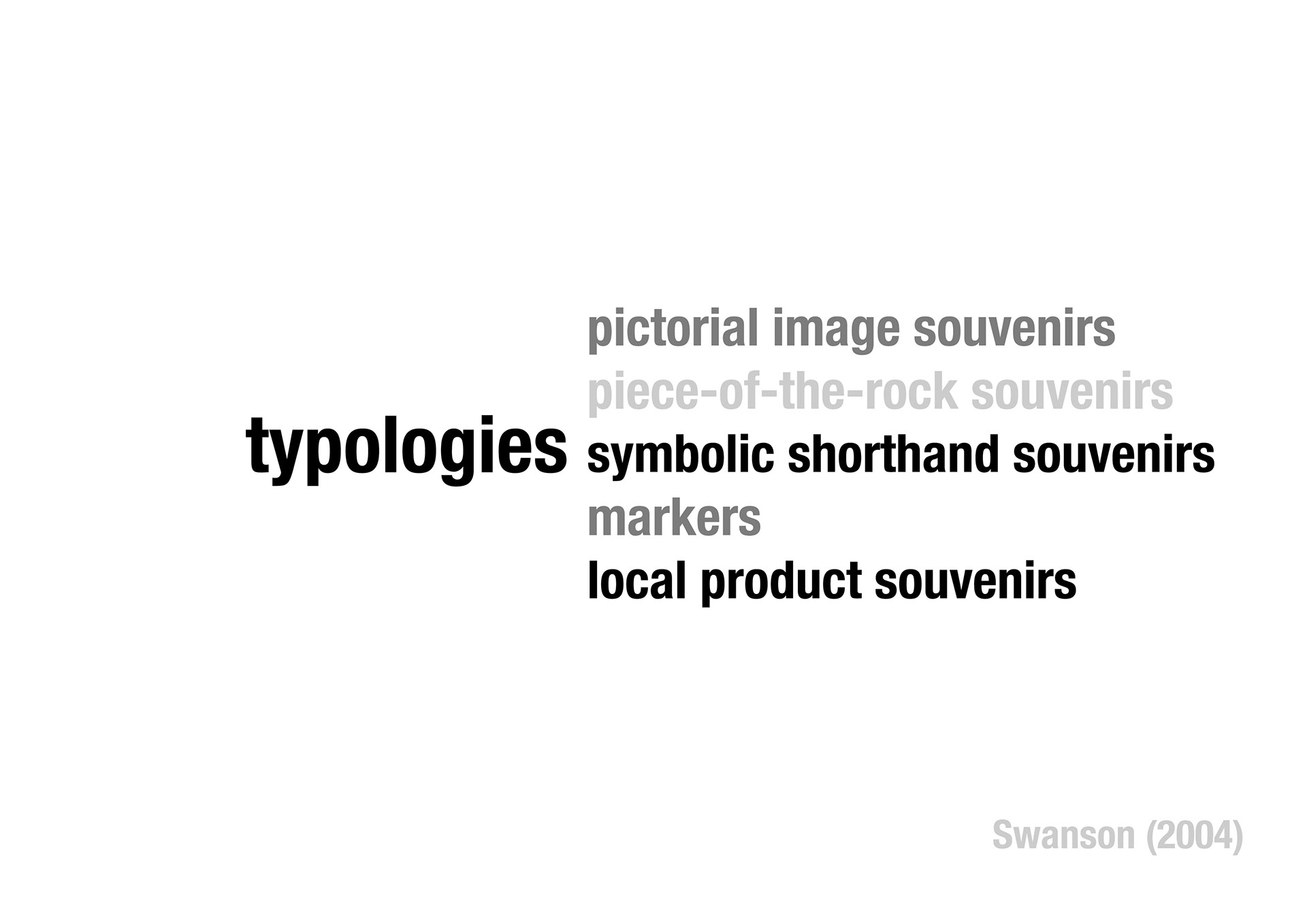


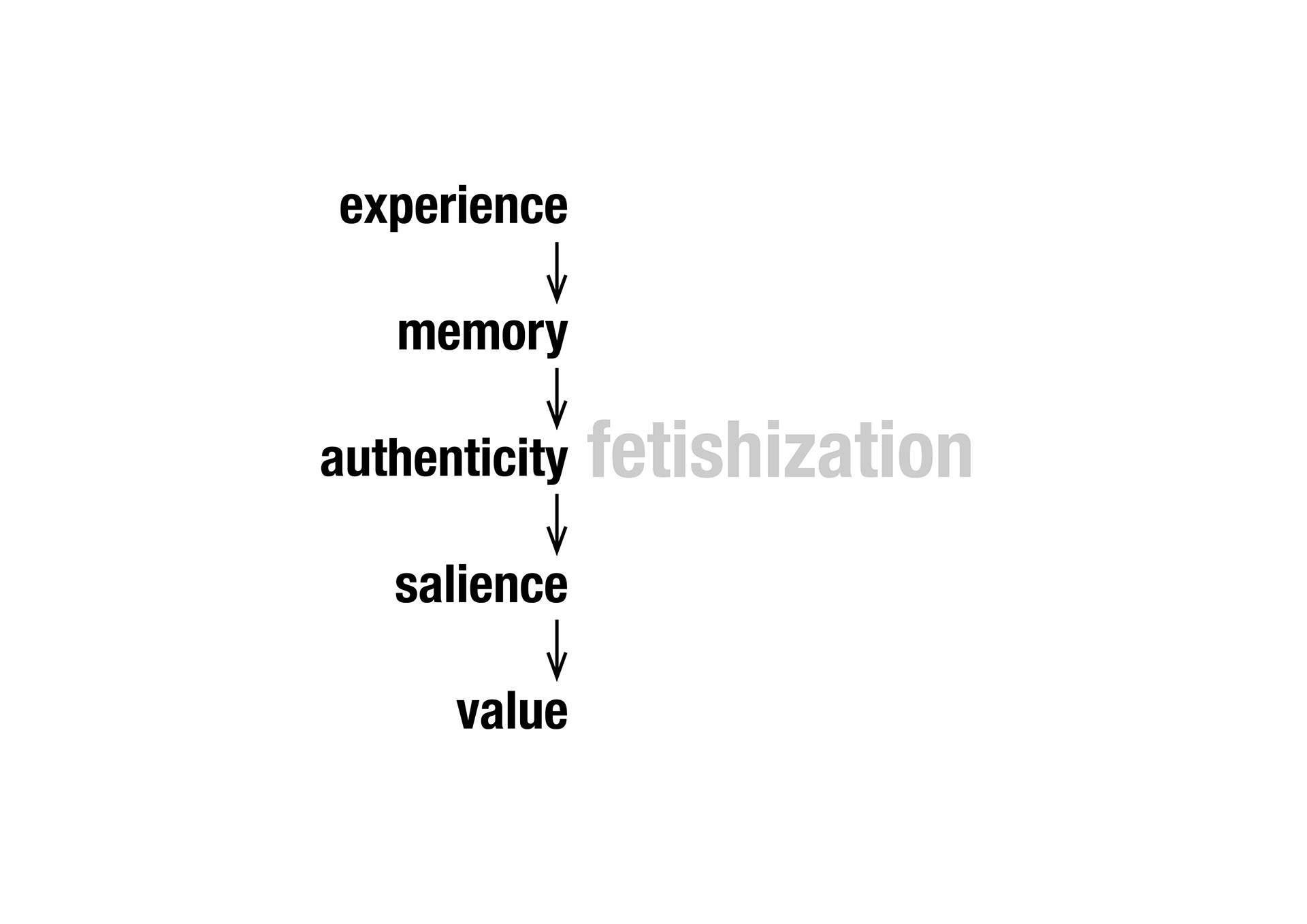
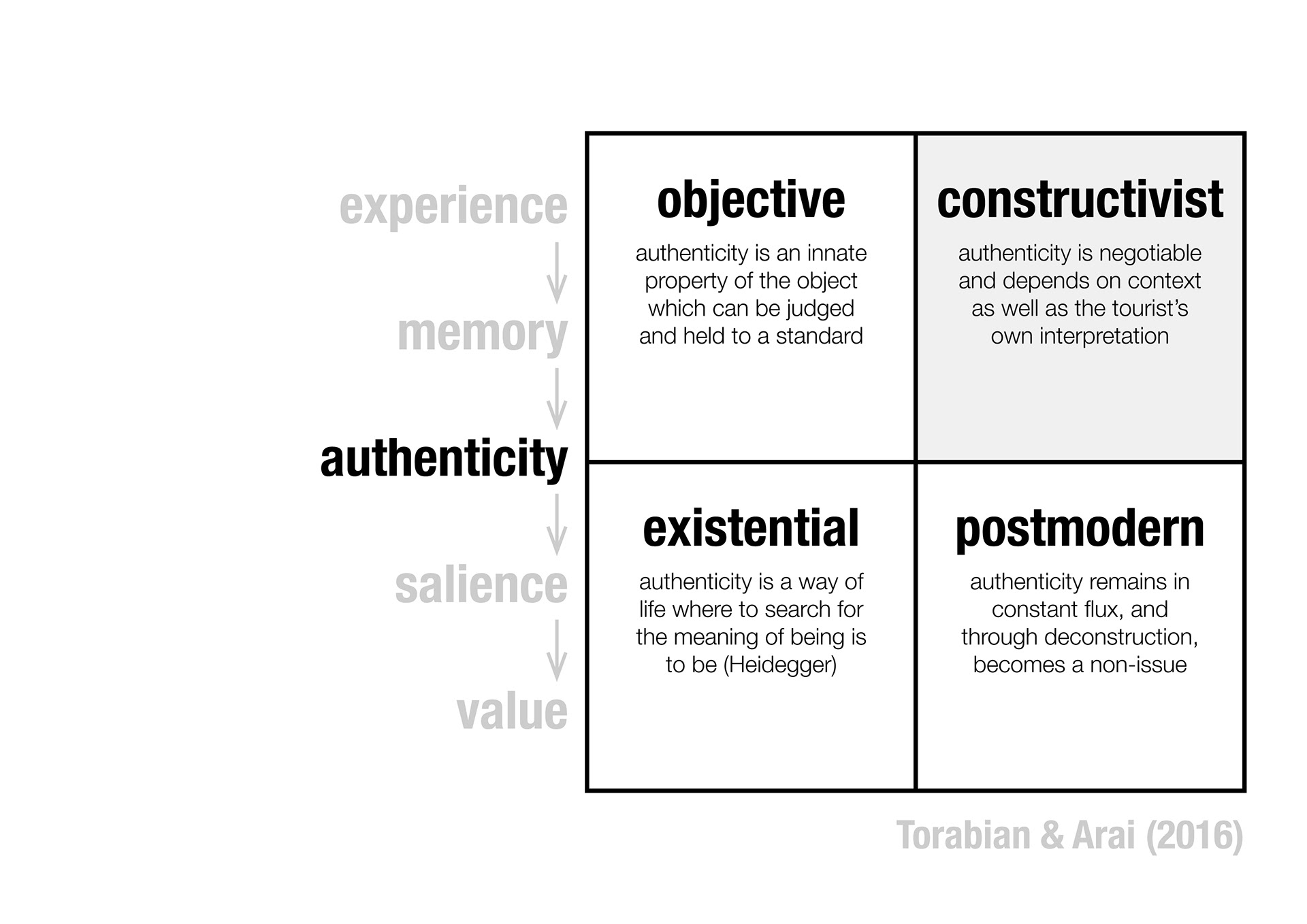
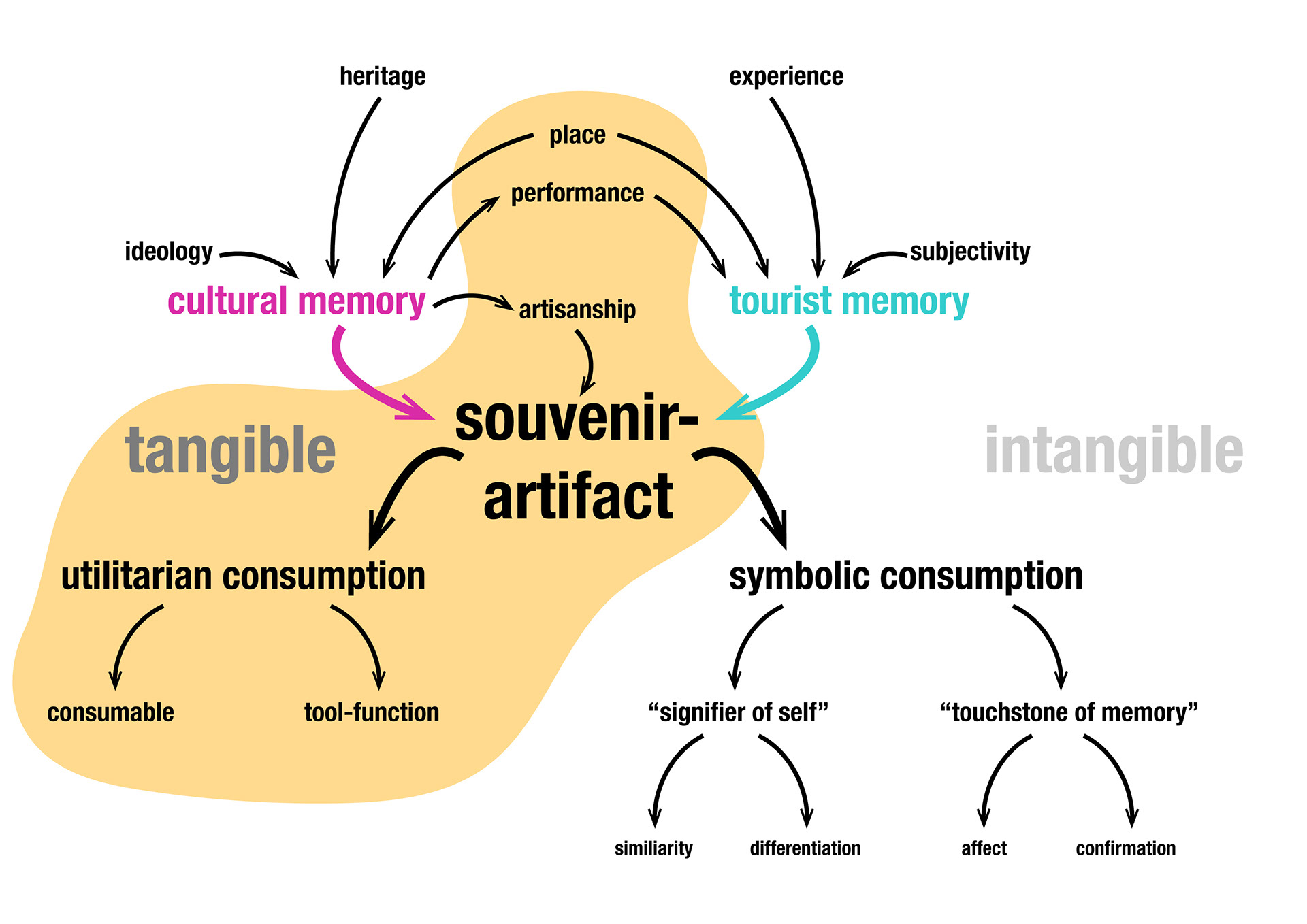
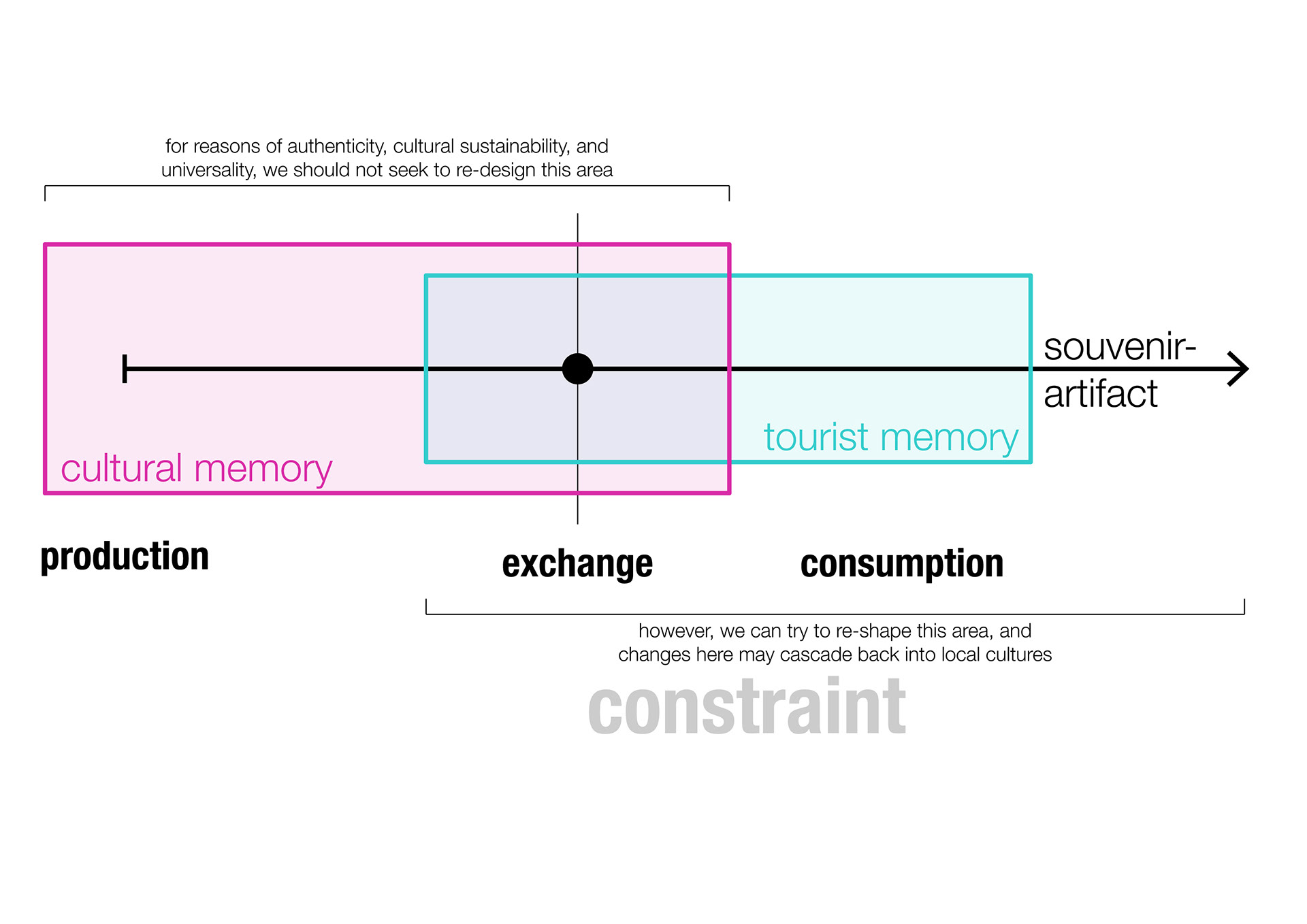
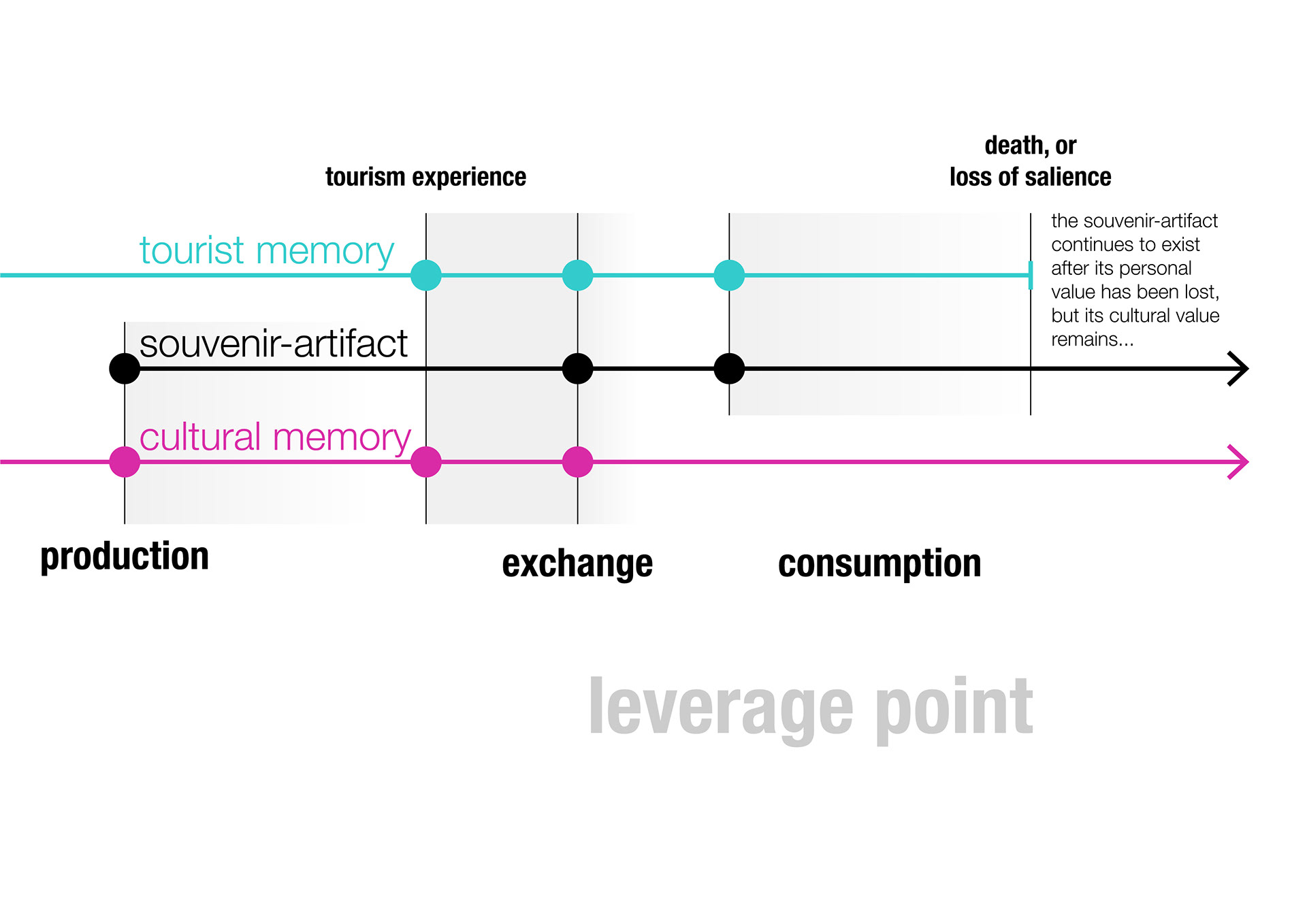
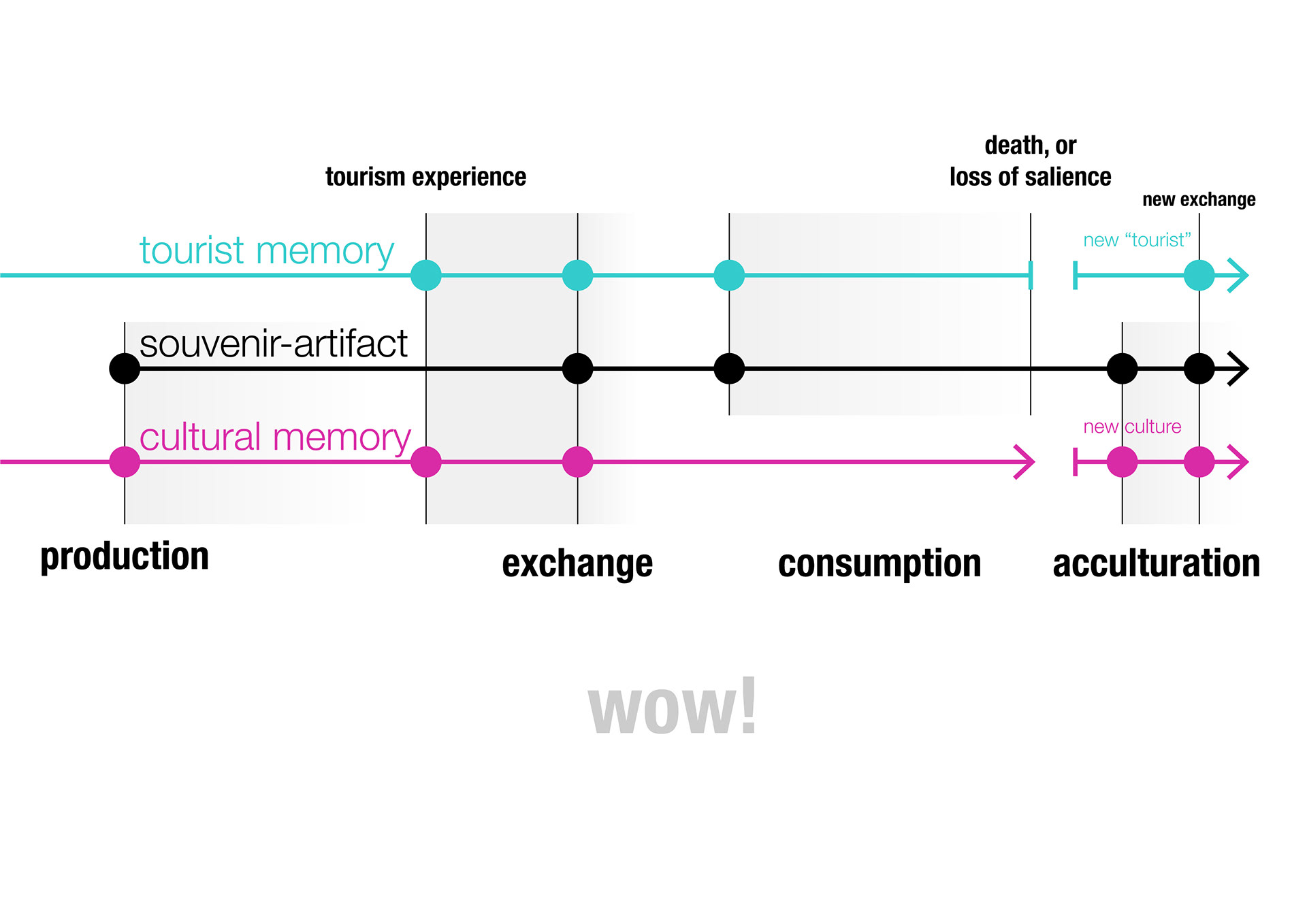

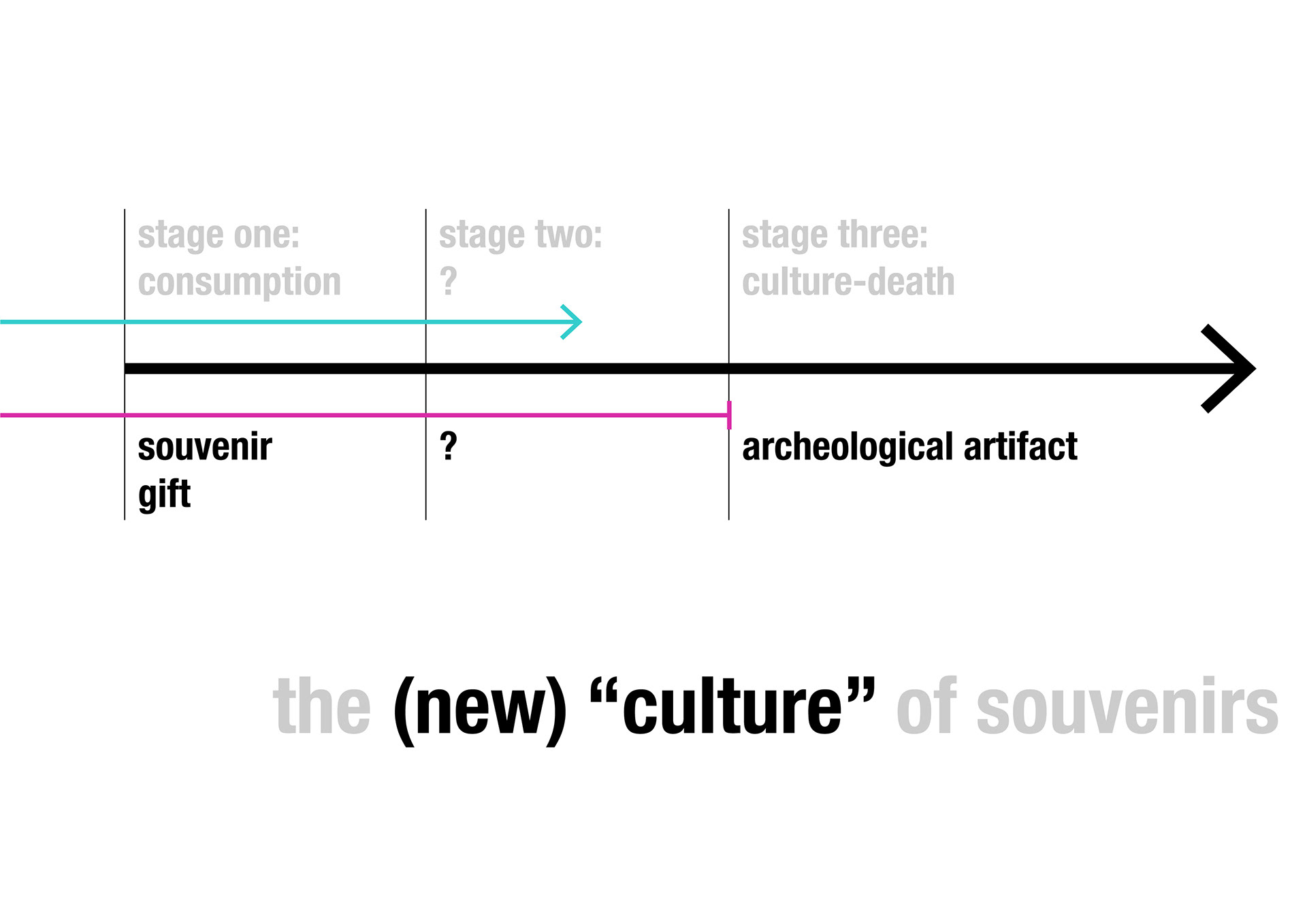
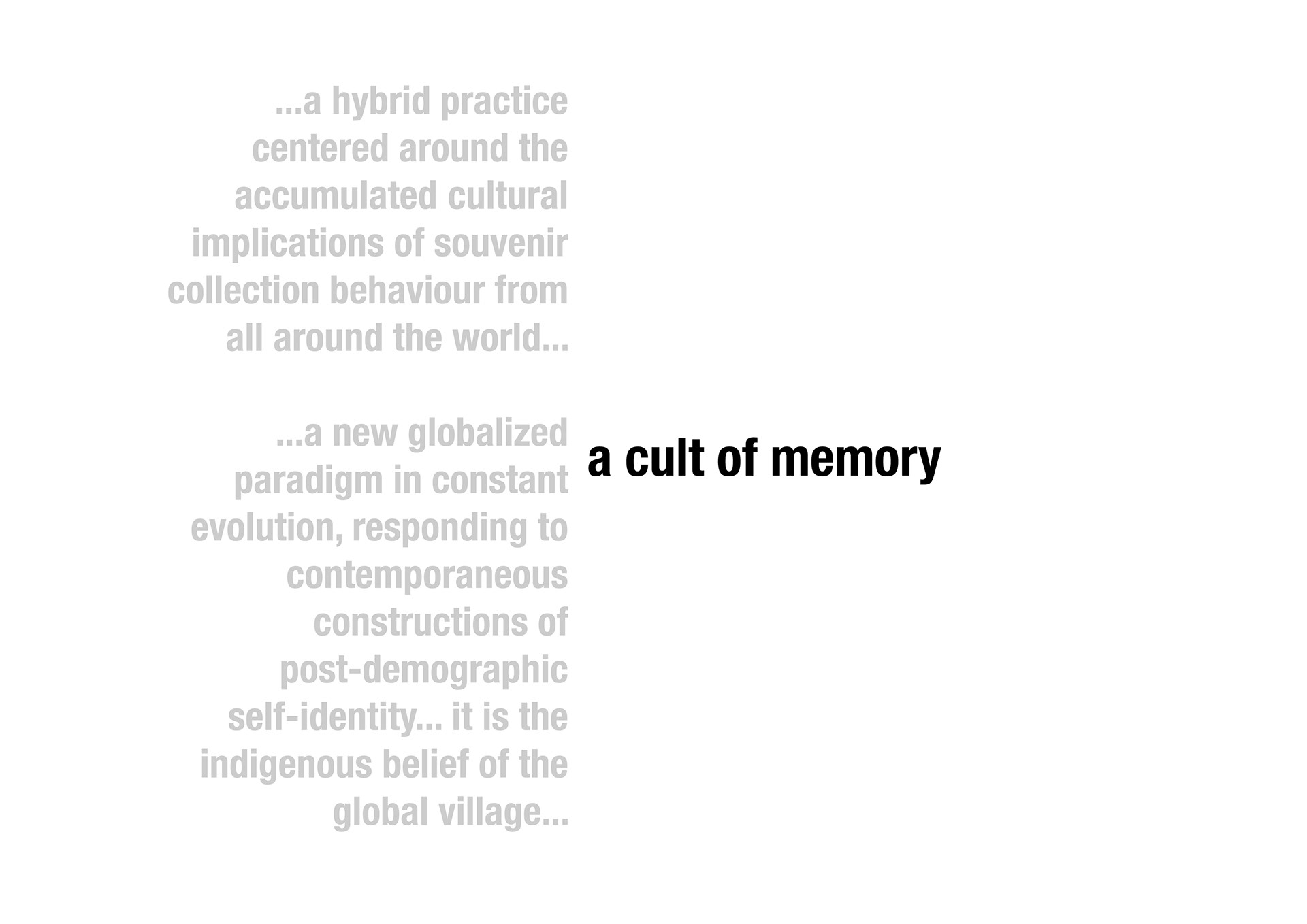
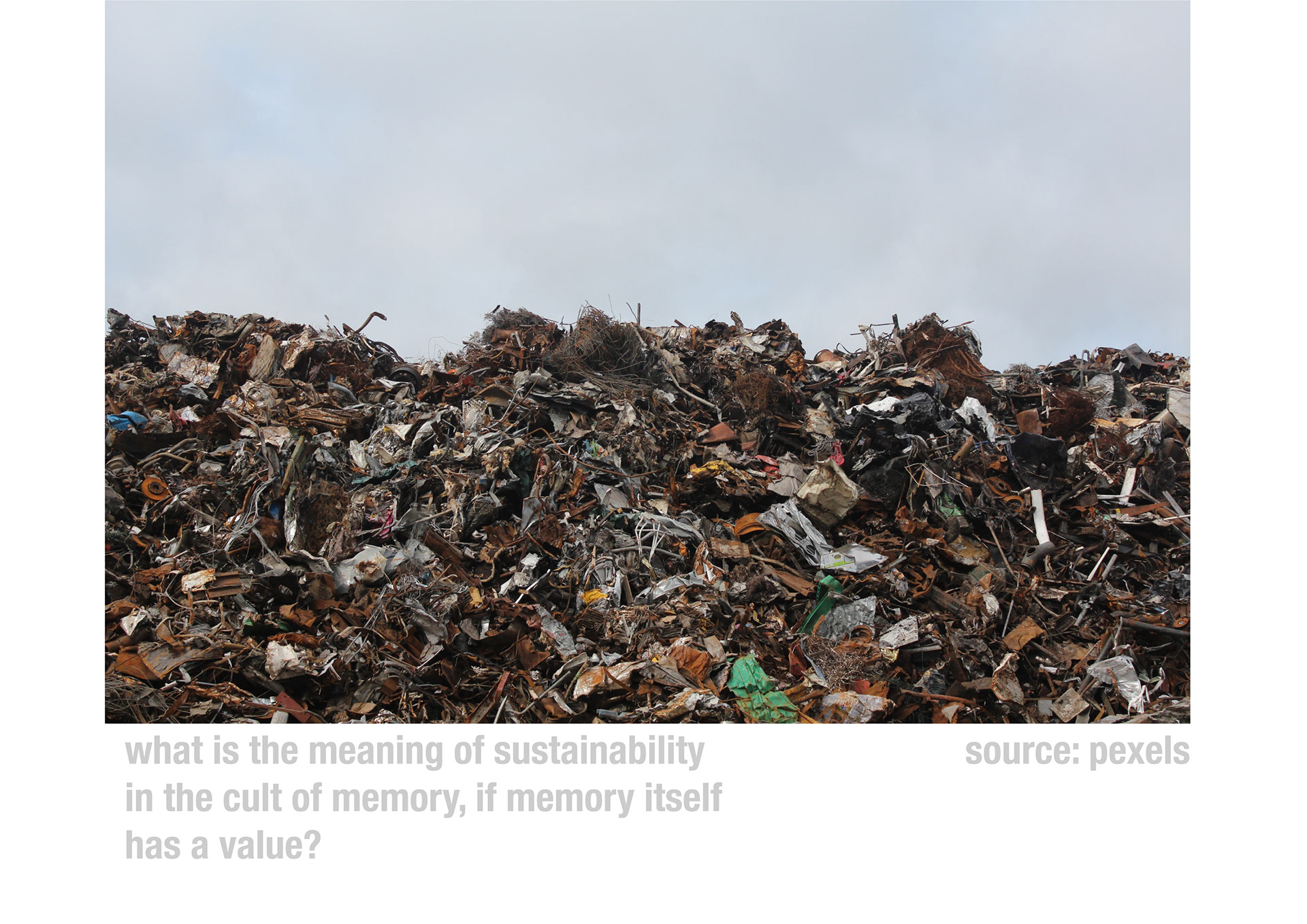
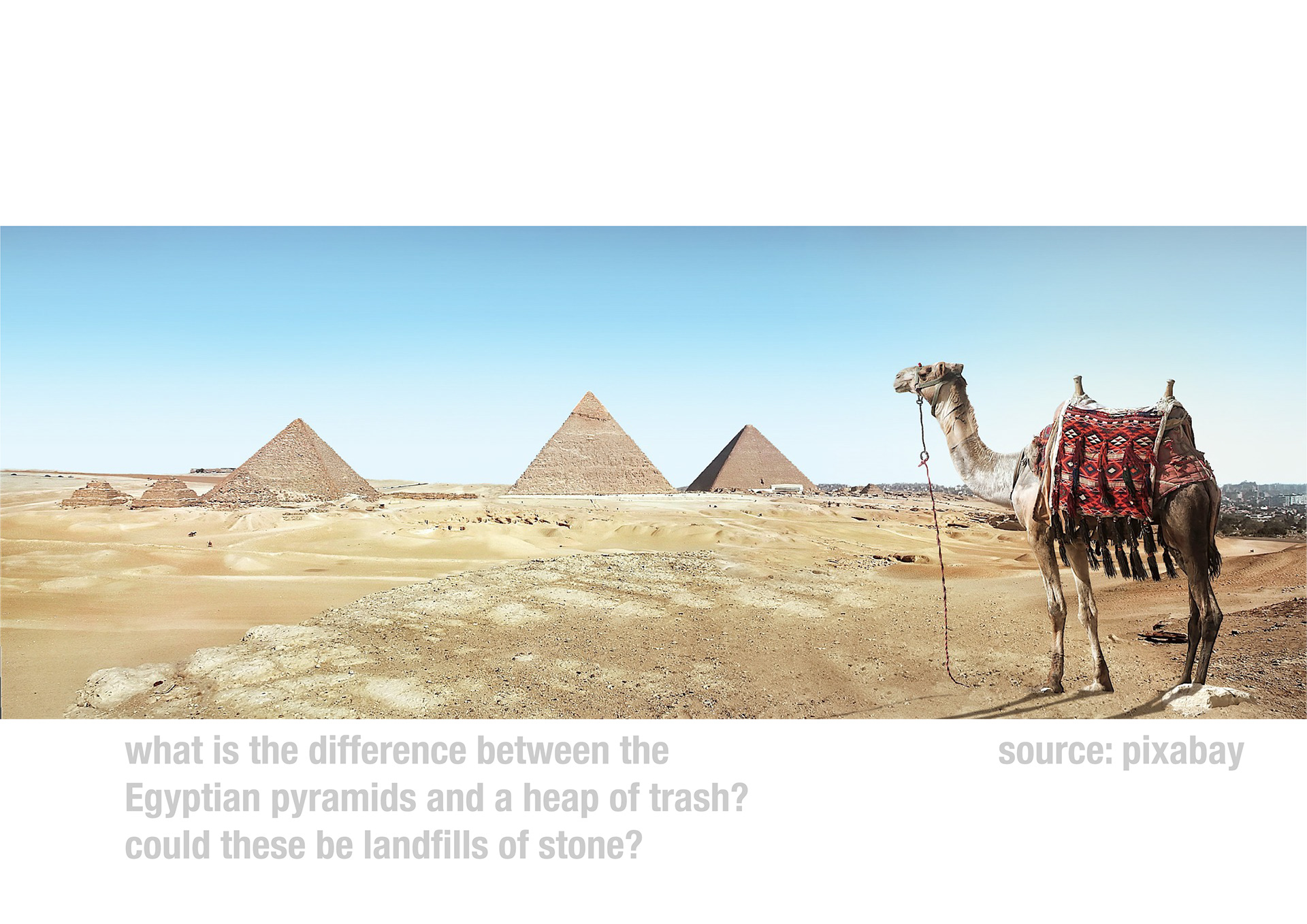
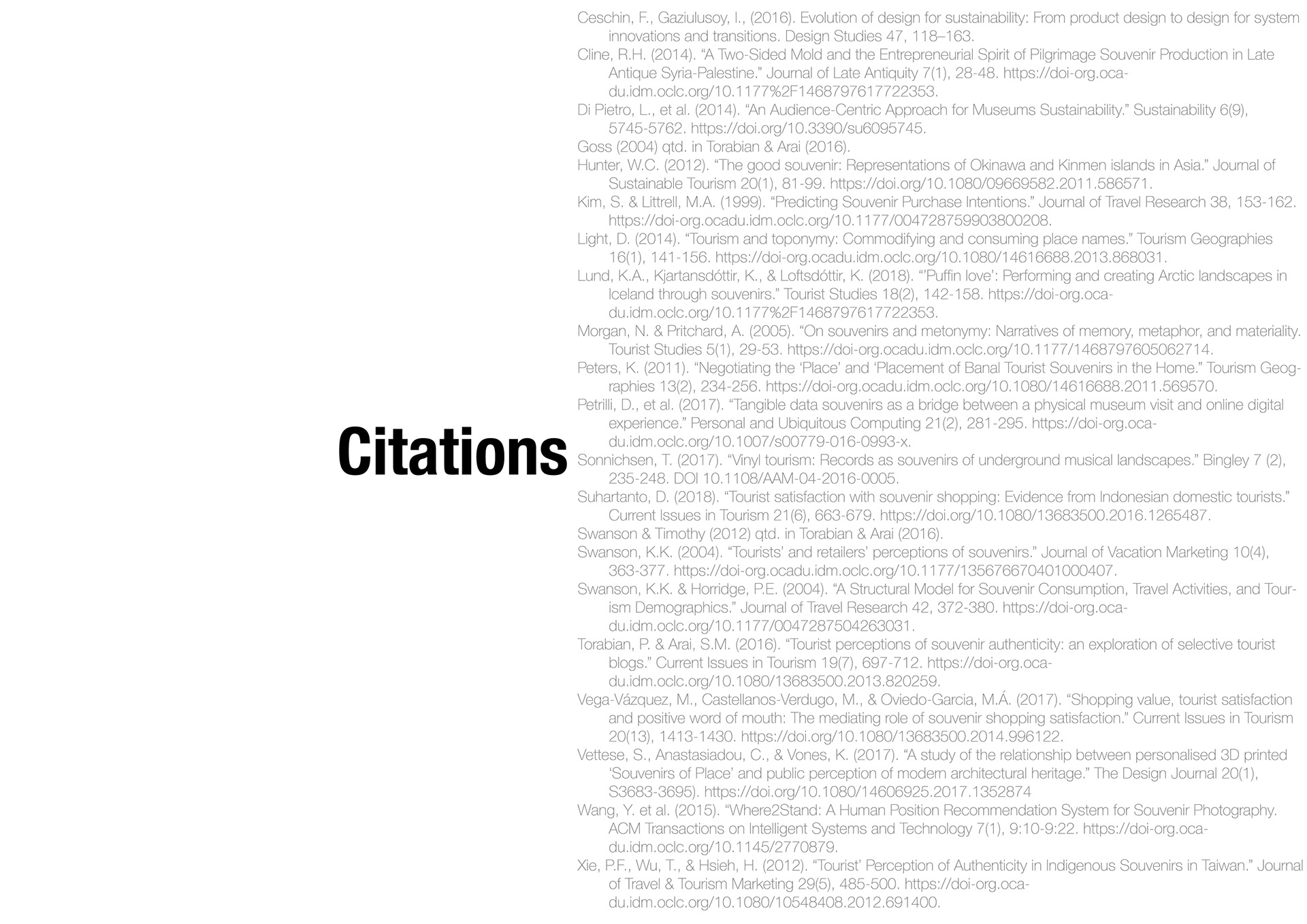
Taking inspiration from my recent travels across Scandinavia, I investigated souvenir-commodities in the context of both environmental and cultural sustainability. I conceptualized the souvenir in a two-axis dichotomy as a tangible artifact whose value is entirely intangible and is fabricated through a mediation of local and tourist memory—a fetishization of hybridity. When either memory is lost (such as through user-death or desalience), the souvenir becomes valueless and is discarded as waste. I propose a new “culture of the souvenir,” a cult of memory so to speak, whereby the souvenir-artifact embraces its embedded identity not solely as a manifestation of a host culture but instead, as a souvenir itself partaking in a global souvenir culture. In this augmented paradigm, the souvenir-artifact, rather than having a fixed value-assessment stemming from the initial act of production and exchange, instead constantly accumulates value as it is consumed through provenance, as a snowball rolling down a hill of memories. However, I conclude with the question: it remains to be seen the value of our landfills today on the archeological timescale, so what does a sustainable life-cycle truly engender? If we achieve a true zero-waste society, then by what artifacts will we be remembered in the museums of the future? The project also has a meta-dimension, arguing that the greatest threat to sustainability is not a factor of life cycles, but the failure of designers to understand the holistic implications of their work; therefore, the project is founded on in-depth academic research. “Sustainable Design,” DSKD, May 2019.

















